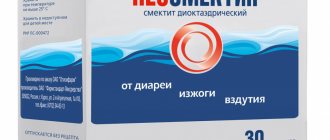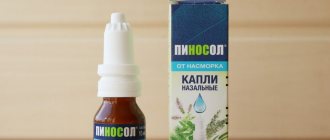Nosological classification (ICD-10)
- B02 Herpes zoster
- G50 Trigeminal nerve lesions
- G51 Lesions of the facial nerve
- G54.0 Lesions of the brachial plexus
- G54.9 Damage to nerve roots and plexuses, unspecified
- G58.0 Intercostal neuropathy
- G62.1 Alcoholic polyneuropathy
- G62.9 Polyneuropathy, unspecified
- G63.2 Diabetic polyneuropathy (E10-E14+ with common fourth character .4)
- G90.9 Autonomic nervous system disorder, unspecified
- H48.1 Retrobulbar neuritis in diseases classified elsewhere
- M54.1 Radiculopathy
- M54.4 Lumbago with sciatica
- M79.1 Myalgia
- M79.2 Neuralgia and neuritis, unspecified
- R25.2 Cramp and spasm
- R52 Pain not elsewhere classified
- R56.8 Other and unspecified convulsions
Compound
| Solution for intramuscular administration | 1 amp. (2 ml) |
| active ingredients: | |
| thiamine hydrochloride | 100 mg |
| pyridoxine hydrochloride | 100 mg |
| cyanocobalamin | 1 mg |
| lidocaine hydrochloride | 20 mg |
| excipients: benzyl alcohol - 40 mg; sodium polyphosphate or sodium tripolyphosphate - 20 mg; potassium hexacyanoferrate - 0.2 mg; sodium hydroxide solution 1 M - to pH 4–5; water for injection - up to 2 ml |
B vitamins in the treatment of acute back pain: myth or reality?
Significant changes are taking place in the treatment of acute back pain. The main difference is the abandonment of strict immobilization of patients and the transition to rapid activation with the help of physical therapy. In this case, one of the conditions for successful therapy is pain relief, starting from the first day of the acute period. Traditionally, simple analgesics (Aspirin, Paracetamol), nonsteroidal anti-inflammatory drugs (NSAIDs), muscle and epidural blockades are used for this. Along with these approaches, combination vitamin preparations containing thiamine (vitamin B1), pyridoxine (vitamin B6) and cyanocobalamin (vitamin B12) have proven to be quite popular in the relief of acute pain.
Interest in the widespread use of a combination of B vitamins for pain came from practice. Since 1950, in many countries they began to be considered as analgesics. It is well known that B vitamins are neurotropic and significantly affect processes in the nervous system (metabolism, metabolism of mediators, transmission of excitation). In domestic practice, B vitamins are used very widely. Clinical experience shows that parenteral use of a combination of thiamine, pyridoxine and cyanocobalamin relieves pain well, normalizes reflex reactions, and eliminates sensitivity disorders. Therefore, for pain syndromes, doctors often resort to using vitamins of this group in combination with other drugs.
The popularity of B vitamins for acute back pain is also associated with other aspects. When working with patients suffering from such pain, one often encounters certain difficulties. Firstly, these are various complications of pharmacotherapy. The use of numerous NSAIDs is often rejected by patients themselves due to side effects, mainly from the gastrointestinal tract. Secondly, if any drug is ineffective, it is necessary to prescribe drugs from several groups simultaneously, which increases the risk of side effects and also, as a rule, increases the cost of treatment. Thirdly, many patients have contraindications to various pain-relieving physiotherapeutic procedures (electrotherapy, magnetic therapy, thermal procedures, etc.). Often, due to pain, they cannot leave the house, and accordingly, carrying out any procedures outside the home is excluded. In addition, it is not always possible to carry out the necessary muscle or epidural blockades due to the lack of appropriate conditions or specialists.
More than 90 studies have been published indicating clinical improvement with the use of B vitamins in patients with acute back pain [1–5]. However, many questions remain regarding the use of a combination of B vitamins in the treatment of acute back pain. How can B vitamins help with acute pain? What is their mechanism of action? How quickly does the effect occur? How safe is the combination of these vitamins? Can they be combined with NSAIDs? Is this combination treatment more effective than monotherapy?
The purpose of this work was a randomized, open-label comparative study of the effectiveness of Milgamma, diclofenac and their combination in the treatment of acute pain in the low back. The drug Milgamma is available in ampoules of 2.0 ml. One ampoule contains 100 mg of thiamine hydrochloride, 100 mg of pyridoxine hydrochloride, 1000 mcg of cyanocobalamin and 20 mg of lidocaine. The difference between Milgamma and other vitamin preparations is its release form: one ampoule contains large doses of vitamins B1, B6 and B12 in combination with a local anesthetic. A decisive role in the combined use of B vitamins is played by the fact that the areas of application of B vitamins overlap and complement each other.
The study included 60 patients suffering from acute back pain. Inclusion criteria were acute back pain with an intensity of at least 6 points on the visual analogue scale (VAS). Exclusion criteria were: cancer; back pain caused by pathology of the abdominal and pelvic organs, compression of the spinal cord. All patients were divided into three groups. The first group (“M”) included 20 patients who received 2.0 ml of the drug Milgamma for a period of up to 10 days, the second group (“D”) included 20 patients who took diclofenac 75 mg intramuscularly for the same period per day, the third group (“M + D”) also consisted of 20 people who received daily injections of Milgamma (2.0 ml) and diclofenac (75 mg). The drug diclofenac was chosen for comparison as the most popular painkiller from the NSAID group, widely used in our country to relieve back pain. No other pharmacological drugs and/or physical procedures were prescribed to patients of all three groups. Treatment was carried out on an outpatient basis. The maximum duration of drug use was 10 days. If the pain syndrome was completely eliminated before this period, treatment was stopped.
The average age in the “M” group was 42.8 ± 9.9 years, in the “D” group – 40.0 ± 9.8, in the “M + D” group – 43.1 ± 10 years. In the “M” group there were 40% men and 60% women, in the “D” and “M + D” groups, respectively, 30% men and 70% women. Thus, the study groups were comparable in age and gender (p > 0.15).
The study used clinical neurological analysis, neuroimaging (MRI, CT, radiography), VAS to assess the intensity of pain (daily), a scale of patient impressions of the effectiveness of therapy, and analysis of side effects of drugs. Statistical analysis was carried out using parametric and nonparametric statistical methods (Statistica 5.0 program).
results
The pain syndrome was represented predominantly by muscle-tonic disorders in all groups (100% in all groups). Radicular pain due to discogenic compression was noted: in groups “M” and “D” - 10% each, in group “M + D” - in 20% of cases. At the same time, intervertebral disc herniation was detected on MRI: in the “M” group – in 10% (L5-S1), in the “D” group – in 20% (L5-S1), in the “M + D” group – in 20% cases (L4-L5, L5-S1). Osteochondrosis occurred in 95% of cases, in group “D” - in 100%, in group “M + D” - in 95% of cases.
The intensity of pain according to the VAS scale in the compared groups before treatment did not differ significantly. In groups “M” and “D” there was a statistically significant decrease in pain intensity on the VAS scale, starting from the second day of therapy and its subsequent highly significant decrease throughout the course of treatment (p < 0.001). In the “M + D” group, a significant reduction in pain was noted already from the first day of therapy. Comparing the overall effectiveness of treatment in the studied groups, one can note a significant and consistent reduction in pain during all days of therapy (Table 1).
To assess the dynamics of pain reduction, an analysis was carried out of changes on the VAS scale as a percentage in relation to the intensity of pain before treatment, taken as 100%. By the 3rd day of treatment, all groups achieved a clinically significant reduction in pain for patients (by more than 30%). It should be noted that the greatest changes (reduction of pain) were observed during the first 3 days, but these differences did not reach the level of significance.
There is a widespread belief among doctors that diclofenac is more effective than Milgamma for very intense pain. To test this hypothesis, we compared the effectiveness of treatment in three groups in patients with an initial pain intensity of 8–10 points on the VAS scale. When analyzing the dynamics of pain regression in these patients (8–10 points on the VAS scale), a significant decrease in pain intensity was observed in all groups within the first 5 days. However, if we evaluate the degree of pain relief by days of therapy, we should note a positive effect on the first day of therapy in the “M + D” group (p < 0.05), while in the “M” and “D” groups a significant reduction in pain was observed only with the second day of treatment (Table 2).
In our work, we analyzed the number of patients with varying degrees of pain regression: with complete relief by 100%, with regression by 50 and 30%, depending on the duration of therapy. It should be emphasized that a 30% reduction in pain is considered a clinically significant improvement. On the second day of therapy, clinically significant improvement was noted by 11 people in the “M + D” group, which is significantly more than on this day in the “M” and “D” groups (p < 0.05). In the M + D group there were more patients with complete pain relief during the first 5 days of treatment. However, it can be noted that starting from the 4th and 5th days of treatment, the number of patients with pain regression of more than 30% was approximately the same in the three groups.
Patients were also asked to independently evaluate the analgesic effect of the drugs on a scale of subjective impressions (Table 3). In general, following the results of 10 days of treatment, complete pain relief was noted by 45% of patients in group “M” and 35% of patients in group “D”, however, the largest number of patients with complete regression of pain was in group “M + D” (70%). The fact that pain decreased slightly was reported by 10% of patients taking diclofenac or Milgamma alone. In the group of patients receiving diclofenac, one person had pain that persisted throughout 7 days of treatment and the patient was hospitalized.
During treatment, a number of patients experienced adverse reactions: nausea, abdominal discomfort, stomach pain, diarrhea. Analysis of adverse reactions showed that most of them are associated with taking diclofenac. Their number was significantly higher in the group of patients taking diclofenac (35%), slightly lower in the group using two drugs (25%) and least in the group of patients receiving Milgamma (5%, p < 0.05, urticaria in one patient on the 7th day of therapy). Due to side effects, 20% in the “D” group (10% after the 5th injection, 10% after the 7th injection), 15% in the “M + D” group (after 5 days of treatment) abandoned therapy. 5% - in group “M” (after the 7th injection). Thus, a significantly larger number of patients discontinued treatment due to side effects associated with the use of diclofenac.
Discussion
With a normal and varied diet, the body receives enough vitamins to prevent any vitamin deficiency. With the advent of synthetic vitamins, a person can receive in one dose of the drug the amount of vitamins that comes from food throughout the year. However, at these pharmacological doses, vitamins should be considered as drugs. And what is very important is that at such doses the mechanism of action often differs from the well-known physiological effects of “natural” vitamins [6].
There are two groups of disorders for which vitamin therapy is unconditionally indicated. The first is vitamin deficiency conditions (beriberi disease, gout, alcoholism, malabsorption, cystic fibrosis, etc.). The second is genetic defects in vitamin metabolism. Moreover, both of these groups of vitamin deficiency conditions serve as the basis for only a very small part of all prescriptions of vitamin preparations. In medical practice, B vitamins are most often prescribed as adjuvants for conditions not accompanied by vitamin deficiency: pain syndromes, psychoses, asthenia, tunnel syndromes, alopecia. Very often, good treatment results are achieved. However, it remains unclear in which cases the positive effect is associated with the action of vitamins, and in which it may be random or due to placebo.
However, clinical and experimental studies are currently underway on the use of vitamins as active drugs, with new mechanisms of action [7–9]. Experimental work studying the effects of a combination of vitamins B1, B6 and B12 on pain showed inhibition of nociceptive responses caused by formaldehyde, which did not change after administration of naloxone. It has been suggested that the antinociceptive effect of the combined vitamin complex may be due to inhibition of synthesis and/or blocking the action of inflammatory mediators [7]. Many studies emphasize that both combination and separate use of vitamins B1, B6 and B12 have an analgesic effect. It has been shown that the B complex of vitamins enhances the effect of norepinephrine and serotonin, the main antinociceptive neurotransmitters. In addition, the experiment revealed suppression of nociceptive responses not only in the dorsal horn, but also in the thalamus optica [8].
Despite the fact that there are no large evidence-based studies in this regard, practice shows that B vitamins in large doses do have analgesic properties, and can also enhance the analgesic effects when used simultaneously with simple analgesics or NSAIDs. Positive results have been obtained in the treatment of both musculoskeletal and neuropathic pain [9]. In particular, there are studies showing the effectiveness of vitamin B6 in carpal tunnel syndromes. There are indications that B vitamins enhance analgesia when used concomitantly with diclofenac for acute back pain, which may shorten treatment time and reduce dosages of diclofenac, thus reducing the risk of side effects [10–13].
The results obtained in our work confirmed the effectiveness and safety of the combined drug Milgamma in the treatment of acute back pain. A reliable analgesic effect is observed from the second injection of the drug. The effect of Milgamma, a drug not related to analgesics, turned out to be comparable to diclofenac, a “classical” pain reliever. This may indicate that the combination of B vitamins in Milgamma has a clear analgesic mechanism of action and is not the result of the usual traditional physiological effects of these vitamins. We think this provision is very important, since there is a widespread opinion among doctors that the use of B vitamins for acute pain is ordinary vitamin therapy aimed at “strengthening the nervous system.” Taking into account the new experimental data mentioned above, we can expect that in the future the analgesic properties will be studied in more detail and the mechanisms of action of large doses of B vitamins on humans will be clarified.
In our study, side effects and complications during and after the end of therapy were associated with diclofenac. In the group of patients taking this drug, a high percentage of side effects was obtained (35%), which, unfortunately, indicates that its level is not high enough.
As for combination therapy, it turned out to be more effective than monotherapy in terms of the dynamics of pain regression. A faster and more pronounced reduction in pain in the first days of therapy has been shown, which is very important especially for intense pain. It is likely that combination therapy shortens the treatment period, and also makes it possible to discuss the use of lower doses of NSAIDs when combined with Milgamma. The combination of Milgamma with diclofenac can be recommended for very high pain intensity for its rapid relief in the first days of treatment. It should be noted that the effectiveness of Milgamma monotherapy for intense pain was not inferior to diclofenac, and this fact, taking into account the better safety profile, allows us to classify the drug as universal for both mild and severe pain.
conclusions
The study confirms clinical experience of the high effectiveness of a combination of B vitamins in the treatment of acute back pain.
Monotherapy with Milgamma for acute back pain is accompanied by a significant decrease in the intensity of the pain syndrome from the second day and throughout the entire course of treatment with a virtual absence of undesirable side effects.
Milgamma is an effective pain reliever for both moderate and high intensity pain.
Treatment of acute back pain with diclofenac is effective, but in a third of cases it is accompanied by unwanted side effects, which should be taken into account when choosing medications.
Combination therapy with diclofenac and Milgamma provides a more pronounced analgesic effect than monotherapy (with Milgamma or diclofenac); a pronounced positive effect is observed already on the first day of therapy, which is important to consider if urgent pain relief is necessary.
It is likely that combination therapy (NSAIDs + B vitamins) will allow the use of lower doses of NSAIDs in order to prevent unwanted side effects. when maximum pain relief is achieved.
With a treatment duration of 7–10 days, combination therapy has no advantages over monotherapy with Milgamma or diclofenac in terms of the final result, however, monotherapy with Milgamma is better tolerated and safer.
The drug Milgamma in injections should be considered not as a component for the treatment of vitamin deficiency conditions or a general strengthening agent, but as an active agent, with special, not yet sufficiently studied, but obvious analgesic properties.
For questions regarding literature, please contact the editor.
A. B. Danilov , Doctor of Medical Sciences, Professor of MMA named after. I. M. Sechenova, Moscow
Pharmacodynamics
Neurotropic B vitamins have a beneficial effect on inflammatory and degenerative diseases of the nerves and musculoskeletal system. In high doses, they have analgesic properties, increase blood flow, normalize the functioning of the nervous system and the process of hematopoiesis.
Thiamine (B1) plays a key role in carbohydrate metabolism processes, which are crucial in the metabolic processes of nervous tissue, as well as in the Krebs cycle, with subsequent participation in the synthesis of TPP (thiamine pyrophosphate) and ATP. Pyridoxine (B6) is involved in the metabolism of proteins and partly in the metabolism of carbohydrates and fats. The physiological function of both vitamins (B1, B6) is to potentiate each other’s action, manifested in a positive effect on the nervous, neuromuscular and cardiovascular systems.
Cyanocobalamin (B12) is involved in the synthesis of the myelin sheath, stimulates hematopoiesis, reduces pain associated with damage to the peripheral nervous system, and stimulates nucleic acid metabolism through the activation of folic acid.
Lidocaine is a local anesthetic.
COMPLIGAM IN COMPLEX TAB No. 60
Clinical and pharmacological group
Vitamin B complex. Pharmacological action
A combination product containing B vitamins and lidocaine.
Neurotropic B vitamins have a beneficial effect on inflammatory and degenerative diseases of the nerves and musculoskeletal system. They are not used to eliminate deficiency conditions, but in large doses they have analgesic properties, increase blood flow, normalize the functioning of the nervous system and the process of hematopoiesis (vitamin B12).
Thiamine (vitamin B1) plays a key role in the processes of carbohydrate metabolism, which are crucial in the metabolic processes of nervous tissue, also in the Krebs cycle with subsequent participation in the synthesis of thiamine pyrophosphate and ATP. Pyridoxine (vitamin B6) is involved in the metabolism of proteins, and partly in the metabolism of carbohydrates and fats. The physiological function of both vitamins (B1 and B6) is to potentiate each other’s action, manifested in a positive effect on the nervous, neuromuscular and cardiovascular systems.
Cyanocobalamin (vitamin B12) is involved in the synthesis of the myelin sheath, stimulates hematopoiesis, reduces pain associated with damage to the peripheral nervous system, and stimulates nucleic acid metabolism through the activation of folic acid.
Lidocaine is a local anesthetic that causes all types of local anesthesia.
Pharmacokinetics
Suction and distribution
After intramuscular administration, thiamine is quickly absorbed from the injection site and enters the blood (484 ng/ml after 15 minutes on the first day of administration of a 50 mg dose) and is distributed unevenly in the body with its content in leukocytes of 15%, erythrocytes of 75% and in plasma blood 10%. Due to the lack of significant reserves of the vitamin in the body, it must be ingested every day. Thiamine penetrates the blood-brain barrier and the placental barrier and is excreted in breast milk.
After an intramuscular injection, pyridoxine is quickly absorbed into the bloodstream and distributed in the body, acting as a coenzyme after phosphorylation of the CH2OH group in the 5th position. About 80% of pyridoxine is bound to plasma proteins. Pyridoxine is distributed throughout the body, penetrates the placental barrier, and is excreted in breast milk.
Metabolism
The main metabolites are: thiaminecarboxylic acid, pyramine and some unknown metabolites. Of all the vitamins, thiamine is stored in the body in the smallest quantities. The adult human body contains within 30 mg of thiamine in the form of: 80% in the form of thiamine pyrophosphate, 10% thiamine triphosphate and the rest in the form of thiamine monophosphate.
Removal
Thiamine is excreted in the urine in the alpha phase after 0.15 hours, in the beta phase after 1 hour and in the terminal phase over 2 days.
Pyridoxine is deposited in the liver and oxidized to 4-pyridoxine acid, which is excreted in the urine, a maximum of 2-5 hours after absorption. The human body contains 40-150 mg of vitamin B6, its daily elimination rate is in the range of 1.7–3.6 mg with a replenishment rate of 2.2-2.4%.
Indications for use of the product CompligamV
For pathogenetic and symptomatic treatment of diseases and syndromes of the nervous system of various origins:
- neuropathy and polyneuropathy (diabetic, alcoholic and others);
- neuritis and polyneuritis, incl. retrobulbar neuritis;
- peripheral paresis, incl. facial nerve;
- neuralgia, incl. trigeminal nerve and intercostal nerves;
- pain syndrome (radicular, myalgia);
- night muscle cramps, especially in older age groups;
- plexopathies, ganglionitis (including herpes zoster);
- neurological manifestations of spinal osteochondrosis (radiculopathy, lumbar ischialgia, muscular-tonic syndromes).
Dosage regimen
In case of severe pain syndrome, it is advisable to begin treatment with intramuscular injection (deep) of 2 ml of the product every day for 5-10 days, with subsequent transition either to oral administration or to more rare injections - 2-3 times a week for 2 -3 weeks.
Side effect
Allergic reactions: skin reactions in the form of itching, urticaria; not often - hypersensitivity reactions to the product, incl. rash, difficulty breathing, angioedema, anaphylactic shock.
Other: in some cases - increased sweating, tachycardia, acne.
Contraindications to the use of the CompligamV product
- severe and acute forms of decompensated chronic heart failure;
- children's age (due to lack of research);
- high sensitivity to product components.
Pregnancy and lactation
It is not recommended to use the product during pregnancy and lactation (breastfeeding).
special instructions
In cases of very rapid administration of the product, systemic reactions may develop (dizziness, arrhythmia, convulsions).
Overdose
Symptoms: possible development of systemic reactions - dizziness, arrhythmia, convulsions.
Treatment: symptomatic therapy.
Drug interactions
Pyridoxine is not prescribed simultaneously with levodopa, since the effect is weakened later.
Taking into account the presence of lidocaine in the product, in the case of additional use of epinephrine and norepinephrine, increased side effects on the heart are possible. In case of overdose of local anesthetics, additional epinephrine and norepinephrine should not be used.
Pharmaceutical interactions
Thiamine completely decomposes in solutions containing sulfites.
Thiamine is unstable in alkaline and neutral solutions; administration with carbonates, citrates, barbiturates, and copper products is not recommended.
Vitamin B12 is incompatible with ascorbic acid and heavy metal salts.
Conditions for dispensing from pharmacies
The drug is available with a prescription.
Storage conditions and periods
List B. C The drug should be stored out of reach of children, protected from light at a temperature of 2° to 8°C. Shelf life: 2 years.
Pharmacokinetics
After intramuscular administration, thiamine is quickly absorbed from the injection site and enters the blood (484 ng/ml after 15 minutes on the first day of administration of a 50 mg dose) and is unevenly distributed in the body (in leukocytes 15%, erythrocytes 75% and blood plasma 10% ). Due to the lack of significant reserves of the vitamin in the body, it must be ingested daily. Thiamine penetrates the blood-brain barrier and the placental barrier and is found in breast milk. Thiamine is excreted in the urine in the alpha phase after 0.15 hours, in the beta phase after 1 hour and in the terminal phase within 2 days. The main metabolites are thiamine carboxylic acid, pyramine and some unknown metabolites. Of all the vitamins, thiamine is stored in the body in the smallest quantities. The adult human body contains about 30 mg of thiamine: 80% in the form of thiamine pyrophosphate, 10% thiamine triphosphate and the rest in the form of thiamine monophosphate. After intramuscular injection, pyridoxine is quickly absorbed into the bloodstream and distributed in the body, acting as a coenzyme after phosphorylation of the CH2OH group in the 5th position. About 80% of the vitamin binds to blood plasma proteins. Pyridoxine is distributed throughout the body, penetrates the placenta, and is found in breast milk. Deposited in the liver and oxidized to 4-pyridoxic acid, which is excreted in the urine, a maximum of 2–5 hours after absorption. The human body contains 40–150 mg of vitamin B6, its daily elimination is about 1.7–3.6 mg with a replacement rate of 2.2–2.4%.
COMPLIGAM B solution for intramuscular administration 2ml ampoule No. 5
Pharmaceutical group: Vitamin B complex. Pharmaceutical action: CompligamV is a combination drug containing B vitamins and lidocaine. Neurotropic B vitamins have a beneficial effect on inflammatory and degenerative diseases of the nerves and musculoskeletal system. They are not used to eliminate deficiency conditions, but in high doses they have analgesic properties, increase blood flow, normalize the functioning of the nervous system and the process of hematopoiesis (vitamin B12). Thiamine (B1) plays a key role in the processes of carbohydrate metabolism, which are crucial in the metabolic processes of nervous tissue, as well as in the Krebs cycle with subsequent participation in the synthesis of TPP (thiamine pyrophosphate) and ATP (adenosine triphosphate). Pyridoxine (B6) is involved in the metabolism of proteins, and partly in the metabolism of carbohydrates and fats. The physiological function of both vitamins (B1, B6) is to potentiate each other’s action, manifested in a positive effect on the nervous, neuromuscular and cardiovascular systems. Cyanocobalamin (B12) is involved in the synthesis of the myelin sheath, stimulates hematopoiesis, reduces pain associated with damage to the peripheral nervous system, and stimulates nucleic acid metabolism through the activation of folic acid. Lidocaine is a local anesthetic that causes all types of local anesthesia. Pharmacokinetics: After intramuscular administration of CompligamV, thiamine is quickly absorbed from the injection site and enters the blood (484 ng/ml after 15 minutes on the first day of administration of a 50 mg dose) and is distributed unevenly in the body with its content in leukocytes of 15%, erythrocytes of 75% and blood plasma 10%. Due to the lack of significant reserves of the vitamin in the body, it must be ingested daily. Thiamine penetrates the blood-brain and placental barriers and is found in breast milk. Thiamine is excreted in the urine in the alpha phase after 0.15 hours, in the beta phase after 1 hour and in the terminal phase within 2 days. The main metabolites are: thiaminecarboxylic acid, pyramine and some unknown metabolites. Of all the vitamins, thiamine is stored in the body in the smallest quantities. The adult human body contains about 30 mg of thiamine in the form of: 80% as thiamine pyrophosphate, 10% thiamine triphosphate and the rest as thiamine monophosphate. After intramuscular injection, pyridoxine is quickly absorbed into the bloodstream and distributed in the body, acting as a coenzyme after phosphorylation of the CH2OH group at the 5th position. About 80% of the vitamin binds to blood plasma proteins. Pyridoxine is distributed throughout the body, penetrates the placenta, and is found in breast milk. Deposited in the liver and oxidized to 4-pyridoxic acid, which is excreted in the urine, a maximum of 2-5 hours after absorption. The human body contains 40-150 mg of vitamin B6, its daily elimination rate is about 1.7 - 3.6 mg with a replacement rate of 2.2 - 2.4%.
Indications of the drug Compligam B®
As a pathogenetic and symptomatic remedy in the treatment of syndromes and diseases of the nervous system of various origins:
neuropathy and polyneuropathy, incl. diabetic, alcoholic;
neuritis and polyneuritis, incl. retrobulbar neuritis;
peripheral paresis, incl. facial nerve;
neuralgia, incl. trigeminal nerve and intercostal nerves;
pain syndrome (radicular, myalgia);
night muscle cramps, especially in older age groups;
plexopathies, ganglionitis (including herpes zoster);
neurological manifestations of spinal osteochondrosis (radiculopathy, lumbar ischialgia, muscular-tonic syndromes).
Compligam B 2 ml No. 5 solution for intramuscular injection
Instructions for medical use of the drug CompligamV® Trade name CompligamV® International nonproprietary name No Dosage form Solution for intramuscular administration, 2 ml Composition 2 ml of solution contain active substances: thiamine hydrochloride - 100 mg pyridoxine hydrochloride - 100 mg cyanocobalamin - 1.0 mg lidocaine hydrochloride – 20 mg, excipients: benzyl alcohol, sodium polyphosphate, potassium ferricyanide, sodium hydroxide 1 M solution, water for injection. Description Transparent liquid of pinkish-red color with a characteristic specific odor. Pharmacotherapeutic group Vitamins. B complex of vitamins in combination with other drugs. ATC code A11EX Pharmacological properties Pharmacokinetics of Thiamine hydrochloride After intramuscular administration, thiamine is quickly absorbed from the injection site and enters the blood (484 ng/ml after 15 minutes on the first day of administration of a 50 mg dose) and is distributed unevenly in the body with its content in leukocytes of 15%, erythrocytes 75% and in blood plasma 10%. Thiamine penetrates the blood-brain and placental barriers and is found in breast milk. Vitamin B1 (thiamine) is dephosphorylated in kidney tissue. Thiamine is excreted in the urine in the alpha phase after 0.15 hours, in the beta phase after 1 hour and in the terminal phase within 2 days. The main metabolites are: thiaminecarboxylic acid, pyramine. Of all the vitamins, thiamine is stored in the body in the smallest quantities. Pyridoxine hydrochloride After intramuscular injection, pyridoxine (vitamin B1) is quickly absorbed into the bloodstream and distributed in the body, acting as a coenzyme after phosphorylation of the CH2OH group in the 5th position. About 80% of the vitamin binds to blood plasma proteins. Pyridoxine is distributed throughout the body, penetrates the placenta, and is found in breast milk. Deposited in the liver and oxidized to 4-pyridoxic acid, which is excreted in the urine, a maximum of 2-5 hours after absorption. Cyanocobalamin Cyanocobalamin (vitamin B12), when released into the blood plasma, binds to proteins to form a transport complex. In this form, it is absorbed by the liver tissue. Cyanocobalamin also accumulates in the bone marrow and passes through the hematoplacental barrier. Cyanocobalamin is excreted mainly in bile, in an amount of 0.5-5 mcg per day, while about 70% is reabsorbed and enters the enterohepatic circulation. Cyanocobalamin has a relatively long half-life (T1/2) of 123 hours. Pharmacodynamics CompligamV® has a beneficial effect on inflammatory and degenerative diseases of the nerves and musculoskeletal system. When used in high doses, it has analgesic properties, increases blood flow, normalizes the functioning of the nervous system and the process of hematopoiesis (vitamin B12). Thiamine is metabolized in the body into cocarboxylase (thiamine diphosphate) and thiamine triphosphate by phosphorylation. Cocarboxylase, as an enzyme coenzyme, is involved in the carbohydrate metabolism chain, which is important for the normal functioning of nerves and nervous tissue. Improves conductivity in nerves by influencing synaptic transmission. Vitamin B1 deficiency is accompanied by the accumulation in tissues of under-oxidized products of carbohydrate metabolism: pyruvic acid, lactic acid. As a result, the functioning of the nervous tissue is disrupted with the formation of various pathological conditions. Pyridoxine is phosphorylated in body tissues. Metabolic products are coenzymes of non-oxidative metabolism of almost all amino acids. Coenzymes are involved in the decarboxylation of amino acids with the formation of many physiologically active mediators - adrenaline, tyramine, dopamine, histamine, serotonin. Also involved in the anabolism and catabolism of amino acids through transamination processes. Vitamin B6 affects the metabolism of tryptophan; under its influence, α-amino-β-ketoadininic acid is catalyzed in the process of hemoglobin formation. Cyanocobalamin is involved in the synthesis of the myelin sheath, stimulates hematopoiesis, reduces pain associated with damage to the peripheral nervous system, and stimulates nucleic acid metabolism through the activation of folic acid. Lidocaine is a local anesthetic that causes all types of local anesthesia. Indications for use As a pathogenetic and symptomatic agent in the treatment of diseases and syndromes of the nervous system of various origins: neuropathy and polyneuropathy (diabetic, alcoholic and others) neuritis and polyneuritis, including retrobulbar neuritis, peripheral paresis, including the facial nerve neuralgia, including the trigeminal nerve and intercostal nerves pain syndrome (radicular, myalgia) nocturnal muscle cramps, especially in older age groups plexopathy, ganglionitis (including herpes zoster) neurological manifestations of spinal osteochondrosis (radiculopathy, lumboischialgia, musculotonic syndromes ) Method of administration and dosage In case of severe pain syndrome, it is advisable to begin treatment with intramuscular injection (deep) of 2 ml of the drug daily for 5-10 days, with subsequent transition either to oral administration or to more rare injections (2-3 times a week in within 2-3 weeks). Maximum single dose – 2.0 ml, Maximum daily dose – 2.0 ml, Frequency of administration – once a day. The duration and frequency of treatment courses is determined by the doctor. Side effects dizziness, arrhythmias, convulsions (with rapid administration of the drug) tachycardia acne, itching, urticaria skin rash, swelling of the mucous membrane of the upper respiratory tract, Quincke's edema, anaphylactic shock increased sweating Contraindications individual sensitivity to any of the components of the drug decompensated heart failure, severe cardiac conduction disorders in children and adolescents up to 18 years of age, pregnancy and lactation Drug interactions Vitamin B1 Thiamine is completely destroyed in solutions containing sulfites. Other vitamins are inactivated in the presence of vitamin B1 breakdown products. Thiamine is incompatible with oxidizing substances, mercuric chloride, iodide, carbonate, acetate, tannic acid, ferric ammonium citrate, as well as phenobarbital, riboflavin, benzylpenicillin, dextrose and metabisulfite. Copper accelerates the breakdown of thiamine; in addition, thiamine loses its effect with increasing pH values (more than pH 3). Vitamin B6 Pyridoxine is not prescribed simultaneously with levodopa, since the effect of the latter is weakened. Vitamin B6 may also interact with cycloserine, D-penicillamine, epinephrine, norepinephrine, and sulfonamides, which reduces the effect of pyridoxine. Vitamin B12 Cyanocobalamin may increase allergic reactions caused by thiamine. Cyanocobalamin is incompatible with ascorbic acid and heavy metal salts. Taking into account the presence of lidocaine in the composition of the drug, in the case of additional use of adrenaline and norepinephrine, increased side effects on the heart are possible. In case of overdose of local anesthetics, additional adrenaline and norepinephrine should not be used. Special instructions When the drug is administered very quickly, dizziness, arrhythmia, and convulsions may occur (these symptoms may also be the result of an overdose of the drug). Features of the drug's influence on the ability to drive vehicles and potentially dangerous mechanisms Considering the side effects of the drug, care should be taken when driving and working with potentially dangerous mechanisms. Overdose Symptoms – increased side effects of the drug. Treatment is symptomatic. There is no specific antidote. Release form and packaging Solution for intramuscular administration. 2 ml in light-protective glass ampoules with a colored break ring or with a colored dot and notch. The ampoules are additionally coated with one, two or three colored rings and/or a two-dimensional bar code, and/or an alphanumeric coding, or without additional color rings, a two-dimensional bar code, or an alphanumeric coding. 5 ampoules each in a blister pack made of polyvinyl chloride film and aluminum foil or polymer film or without foil and without film. 1 or 2 blister packs along with instructions for medical use in the state and Russian languages in a cardboard pack. Storage conditions Store in a place protected from light at a temperature of 2 to 8 ºС. Storage and transportation at temperatures below 2 °C are not allowed. Keep out of the reach of children! Shelf life: 2 years Do not use after the expiration date indicated on the package. Conditions for dispensing from pharmacies By prescription Manufacturer Closed joint-stock company “Pharm”, Russia 141345, Moscow region, Sergiev Posad municipal district, rural settlement Bereznyakovskoye, pos. Belikovo, 11 Tel./fax. Owner of the registration certificate Closed Joint Stock Company "Pharm", Russia Address of the organization that accepts claims from consumers on the quality of products (products) in the Republic of Kazakhstan IP "Tipkey" 050004, RK, Almaty, Abylay Khan Avenue 60, office 720. Tel.: +7 705 286 18 0
Interaction
Thiamine completely decomposes in solutions containing sulfites.
Thiamine is unstable in alkaline and neutral solutions; administration with carbonates, citrates, barbiturates, and copper preparations is not recommended.
Pyridoxine is not prescribed simultaneously with levodopa, since the effect of the latter is weakened.
Taking into account the presence of lidocaine in the composition of the drug, in the case of additional use of adrenoline and norepinephrine, increased side effects on the heart are possible. In case of overdose of local anesthetics, additional adrenoline and norepinephrine should not be used.
Vitamin B12 is incompatible with ascorbic acid and heavy metal salts.









